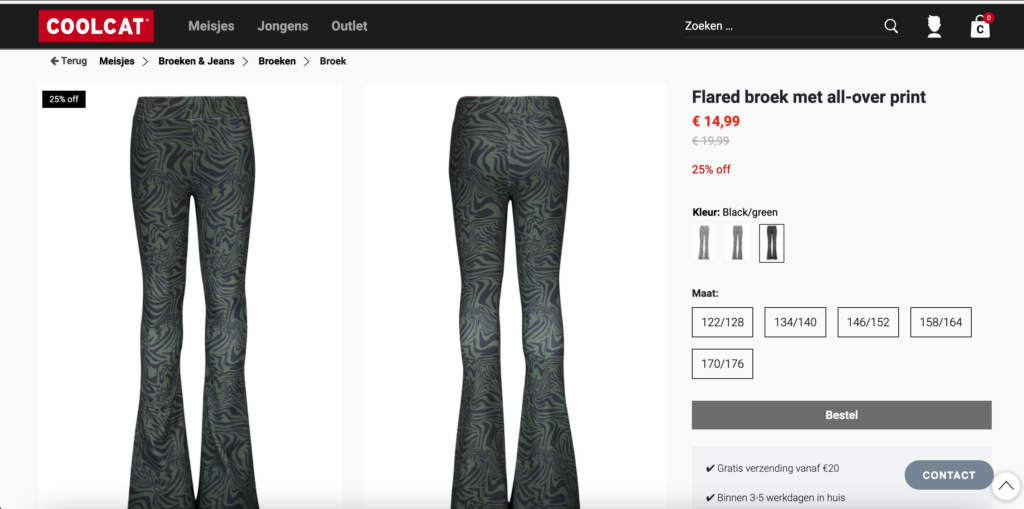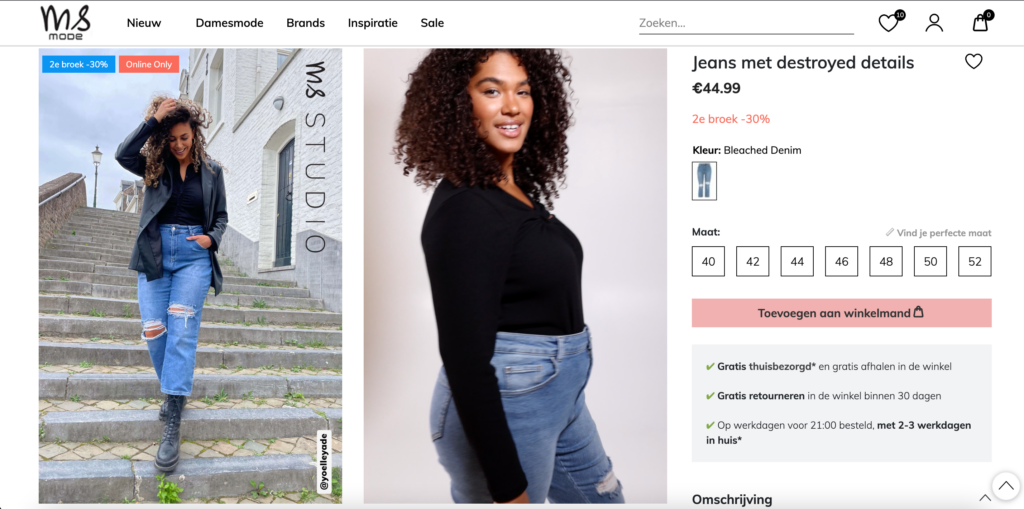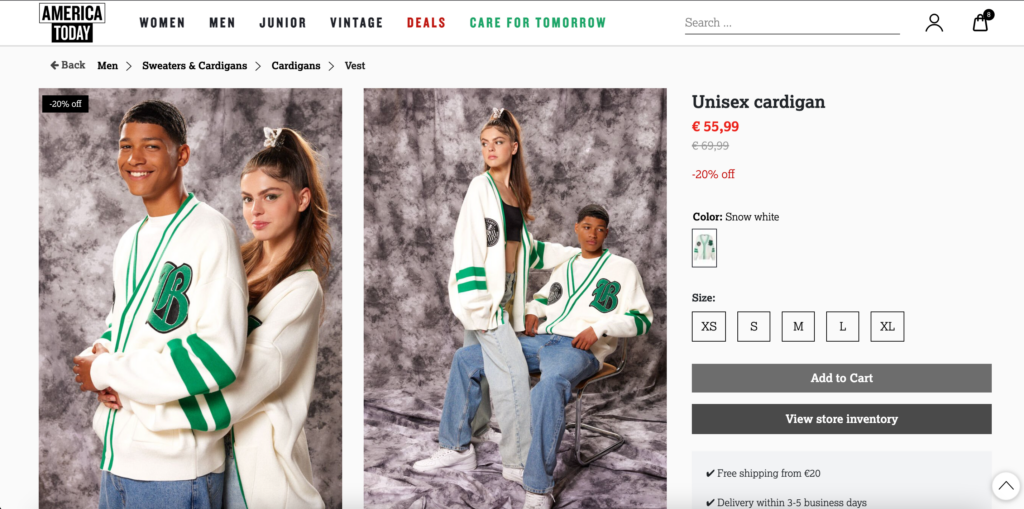Find out how to scale your business efficiently with a white label approach. FORWARD took on the challenge to improve Cool Investments way of working and give their three brands a fresh look and feel, and preserve a unique brand image.
Situation before white label
Our client, Cool Investments, owns a fashion group which consist three brands. Each have their own unique identity and brand image.
- Coolcat: “Clothes for the coolest kids on the block”.
- America Today: “The brand inspired by the American college lifestyle”.
- MS Mode: “The number one in the field of curvy fashion”.
The shopper experience is centered around these identities, which is also the thing you’ll notice when scrolling through their webshops. Even though the brands all belong to the same overarching investment group, all of them were built separately, with a focus on their unique look and feel.
This separate set-up means that there’s a lot of work set out for the development team that has to maintain and build on top of all these different brands. MS Mode could request a feature, just for America Today to request the same feature two months later, and vice versa.
As the years have gone by, a lot of technical debt between the brands had built up. There were brands that were technologically a lot further ahead, using newer payment implementations, a better back-end architecture, different content managing systems, and so forth.
A white label approach sounds like the perfect candidate for this situation to scale their business efficiently. Where the level of advancements equalizes all the brands, and developers no longer have to work for all the separate brands, instead they’ll work on one unified codebase.
What is a white label?
Let’s start with the definition of a white label product: A white label product is a product or service produced by one company that other companies rebrand to make it appear as if they had made it.
An example of this is one that everyone is familiair with, white label products in supermarkets. Richelieu Foods, for example, is a private label food manufacturing company producing frozen pizza, salad dressing, sauces, marinades, condiments, and deli salads for other companies, including Hy-Vee, Aldi, Save-A-Lot, Sam’s Club, Hannaford Brothers Co,… Although the frozen pizzas sold at all previously mentioned brands are identical, they are all packaged differently and sold under the brand image of their respective brands.
This metaphor works in a very similar fashion to the white label built for Cool Investments. Instead of developing and maintaining three different webshops, we built one white label site. Every brand in turn then branches off the white label site.
Considering a white label approach
The white label has proven to have a lot of benefits for a multibrand as Cool Investments. But for any major implementation it’s always wise to consider the pros against the cons.
Pros
- Remove technical debt between brands or sites
- Reduce development work as work only has to happen on one codebase
- Easily introduce new sites or brands on the white label setup
- Features have a faster “go-to-market”
- Less edge cases across all brands, which in turn is more scalable
- Simplify code releases and deployments
Cons
- Initial set-up requires a lot of effort in terms of analysis and implementation
- More complex way of working as features have to be built for multiple sites instead of one
- The freedom of individual sites is restricted as they’ll have to keep site structure and implementations consistent with the white label**
- Requires an active effort throughout the entire organization to align on their business requirements as they’ll have to decide together what will be added to the white label
**Remark: features could still be built for individual brands. This with a feature toggle per brand that decides whether they’ll make use of the feature or not. Although it would be best for all brands to make use of the new features.
Customer solution
Between wishing for a white label, and realizing one, a lot of steps are in place. Before we could start the project we had to do a thorough analysis of the current situation. A Commerce Cloud Architect within FORWARD planned out the technical steps to realize a white label.
The key differences between MS Mode, Coolcat and America Today had to be identified. These differences could make a huge change in how long it will take to realize a fully fledged white label. Luckily the central theme that connects all brands is that they were built on the Salesforce Commerce Cloud platform.
Even though they were all built on the same technology, and hosted on the same realm. The differences between the brands had become quite drastic. Differences in the Order Management Systems, Product Information Management, Content Creation and many more all had to be accounted for.
Luckily there were also some common implementations, and we could come to a clear image of what the white label would end up looking like. The implementation phase itself only lasted for four months. A majority of the work contains the technical implementation, where the senior developers at both FORWARD and Cool Investments had their work cut out for them. But the e-commerce teams, Data, CRM, IT, Purchasing Department, all had their role in realizing the project.
In the end we were able to migrate all operations successfully to the white label, right in time as the most commercial periods in the fashion industry were looming around the corner.
The end results
The white label has successfully been launched for all three brands. This immediately gives all three brands a fresh look and feel. Even though all brands now access the same code, the brand image is still unique to every brand because of the custom content, styling, and products of each brand.
A new product detail page was also released, in this past this would’ve been an exclusive release for one brand, instead it is now a release for all three brands. A huge improvement in the way of working that positively affects the way customers interact with the sites.
The customer journey for all brands has drastically been improved which will positively affect conversion. But the benefits aren’t exclusive to the customers. The developers within the organization are also very happy that they will no longer have to built features separately for the brands. Instead they’ll develop them for all brands.






